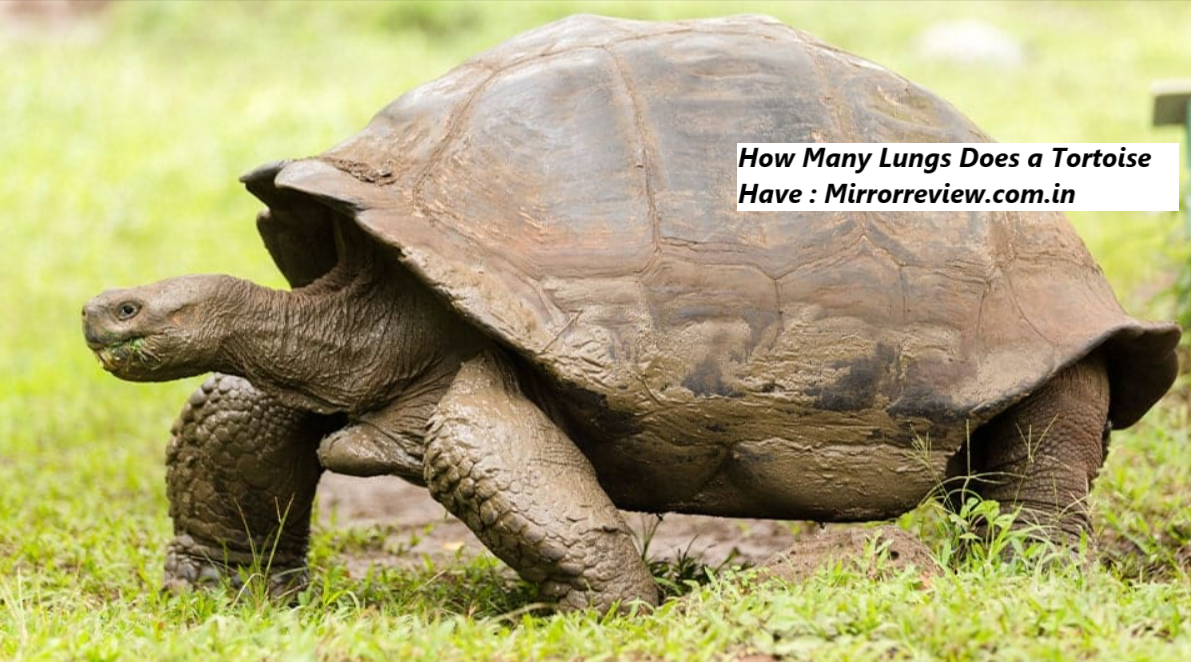Tortoises, like all other reptiles, are fascinating creatures that offer valuable insights into the diversity of life on Earth. One intriguing question that arises when studying tortoises is: how many lungs does a tortoise have? The answer is straightforward – like most vertebrates, tortoises have two lungs. However, the way their respiratory system works and how it adapts to their unique lifestyle is far from ordinary. This article delves into the anatomy, functionality, and special adaptations of a tortoise’s lungs, providing a comprehensive understanding of their respiratory system.
The Basic Anatomy of a Tortoise’s Lungs
Tortoises belong to the order Testudines, which includes turtles and terrapins. As reptiles, they have lungs that are essential for oxygen exchange, enabling them to breathe air and sustain their metabolic processes. How Many Lungs Does a Tortoise Have Unlike fish, which have gills, tortoises rely solely on their lungs for respiration.
A tortoise’s lungs are located in the upper part of its body cavity, just beneath the carapace (the domed shell) and above the other internal organs. These lungs are spongy, elastic structures that allow for efficient gas exchange. The walls of the lungs are lined with tiny air sacs called alveoli, where oxygen from inhaled air diffuses into the bloodstream, and carbon dioxide, a metabolic waste product, diffuses out.
How Tortoises Breathe
Breathing in tortoises is an intricate process due to the constraints imposed by their rigid shells. Unlike mammals, tortoises cannot expand and contract their ribcage to draw air into their lungs. Instead, they rely on specialized muscle groups and movements of their internal organs to facilitate breathing.
Muscle Mechanics
Tortoises use a set of abdominal and limb muscles to create changes in pressure within their body cavity, enabling the lungs to expand and contract. The muscles responsible for inhalation pull the viscera (internal organs) downward, creating space for the lungs to expand. During exhalation, different muscles push the viscera upward, forcing air out of the lungs.
Also Read:- What to Eat to Prepare for RASP? Know Hear!
Role of the Shell
The tortoise’s shell, while protective, poses challenges for respiration. The rigid structure means that the lungs cannot expand outward like in mammals. To overcome this, tortoises have evolved a unique way of using their muscles and internal anatomy to work around this limitation. The shell’s shape and internal cavities also help create an efficient respiratory system by protecting the lungs and aiding in air flow.
Adaptations of Tortoise Lungs
Tortoises exhibit remarkable adaptations in their respiratory system to suit their lifestyle and environment. These adaptations vary among species, depending on their habitat (terrestrial or semi-aquatic) and activity level.
Efficient Oxygen Exchange
Given their relatively slow metabolism, tortoises do not require as much oxygen as mammals or birds. However, their lungs are highly efficient at extracting oxygen from the air, ensuring that even in low-oxygen environments, they can sustain their bodily functions.
Burrowing Species
Many tortoise species are burrowers, living in underground shelters where oxygen levels may be lower than above ground. Their lungs and respiratory system are adapted to function effectively in these conditions. The ability to tolerate higher levels of carbon dioxide allows them to survive in such environments.
Aquatic and Semi-Aquatic Species
While tortoises are primarily land dwellers, some semi-aquatic species, like the red-footed tortoise, can hold their breath for extended periods when submerged. Their lungs play a crucial role in buoyancy control, allowing them to navigate their aquatic environments efficiently. However, unlike aquatic turtles, tortoises cannot extract oxygen from water and must surface to breathe.
Also Read:- Pakistan vs West Indies: A Cricketing Rivalry for the Ages!
Common Respiratory Issues in Tortoises
Respiratory health is vital for a tortoise’s overall well-being. However, tortoises are susceptible to various respiratory issues, especially when kept in captivity without proper care. Some common problems include:
Respiratory Infections
Respiratory infections in tortoises can be caused by bacteria, viruses, or fungi. Symptoms include wheezing, nasal discharge, and lethargy. Poor husbandry, such as inadequate temperature and humidity levels, often contributes to these infections.
Environmental Stress
Sudden changes in temperature or humidity can stress a tortoise’s respiratory system, leading to illnesses. Proper habitat maintenance is crucial to prevent such issues.
Shell Injuries
Since the lungs are located just beneath the carapace, injuries to the shell can impact respiratory function. How Many Lungs Does a Tortoise Have Care should be taken to protect tortoises from accidents or predators that could damage their shells.
How to Support a Tortoise’s Respiratory Health
Ensuring the respiratory health of a tortoise involves providing an environment that mimics its natural habitat as closely as possible. Here are some tips:
- Optimal Temperature and Humidity: Maintain species-specific temperature and humidity levels to support their natural respiratory function.
- Clean Environment: Regularly clean the enclosure to prevent the buildup of harmful bacteria and fungi.
- Proper Diet: A balanced diet helps maintain a tortoise’s overall health, indirectly supporting its respiratory system.
- Regular Veterinary Check-ups: Routine health checks can help detect and address respiratory issues early.
- Minimized Stress: Provide hiding spots and a stable environment to reduce stress, which can weaken the immune system.
Conclusion
Tortoises, with their two lungs and unique respiratory adaptations, showcase the incredible diversity of life and the ways animals evolve to overcome challenges posed by their environment. Their rigid shells and slow metabolisms are just two aspects of their fascinating biology, and their lungs play a critical role in supporting their survival. By understanding their anatomy and needs, we can better appreciate these ancient reptiles and ensure their health and well-being in both natural habitats and captivity.
